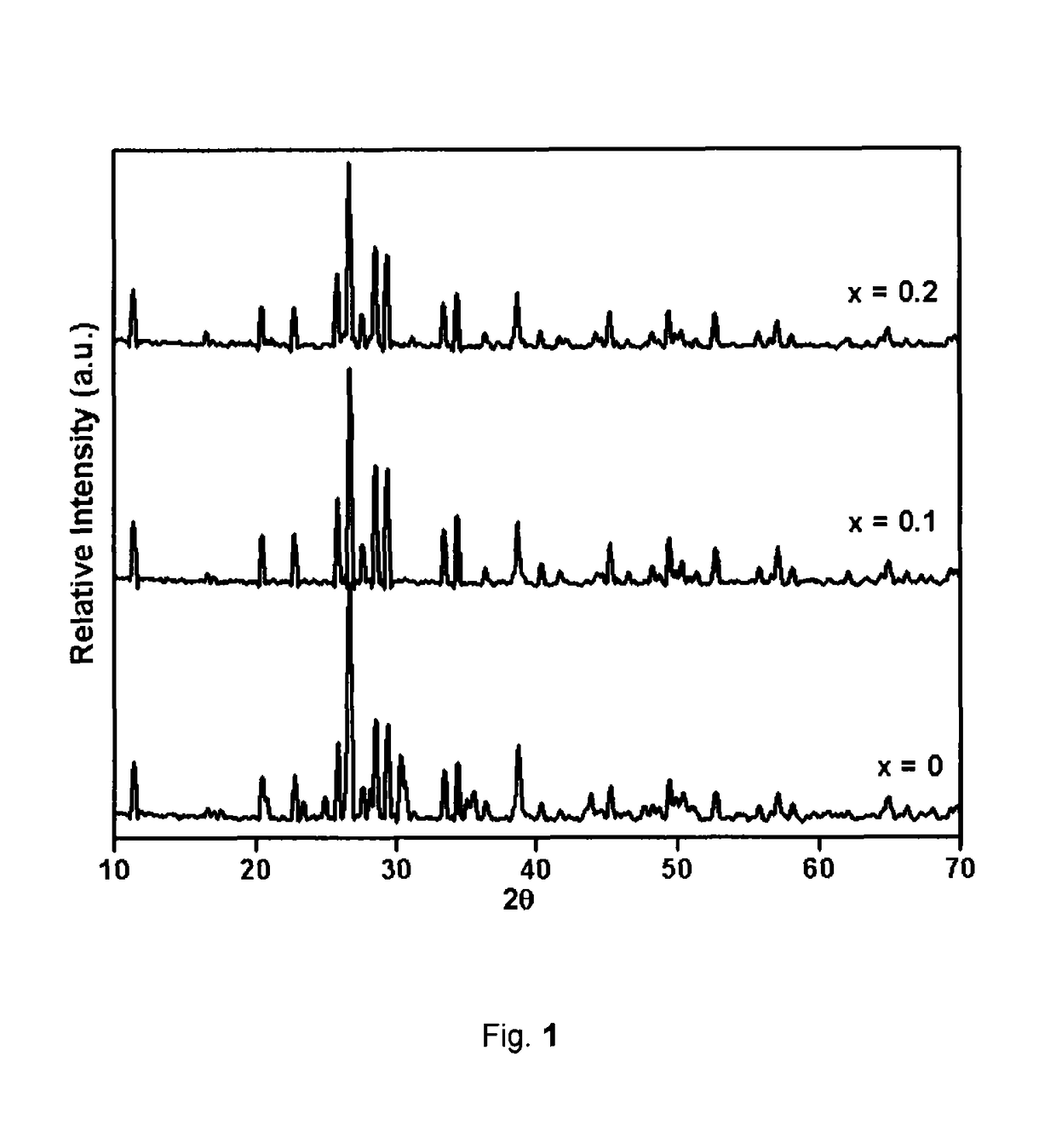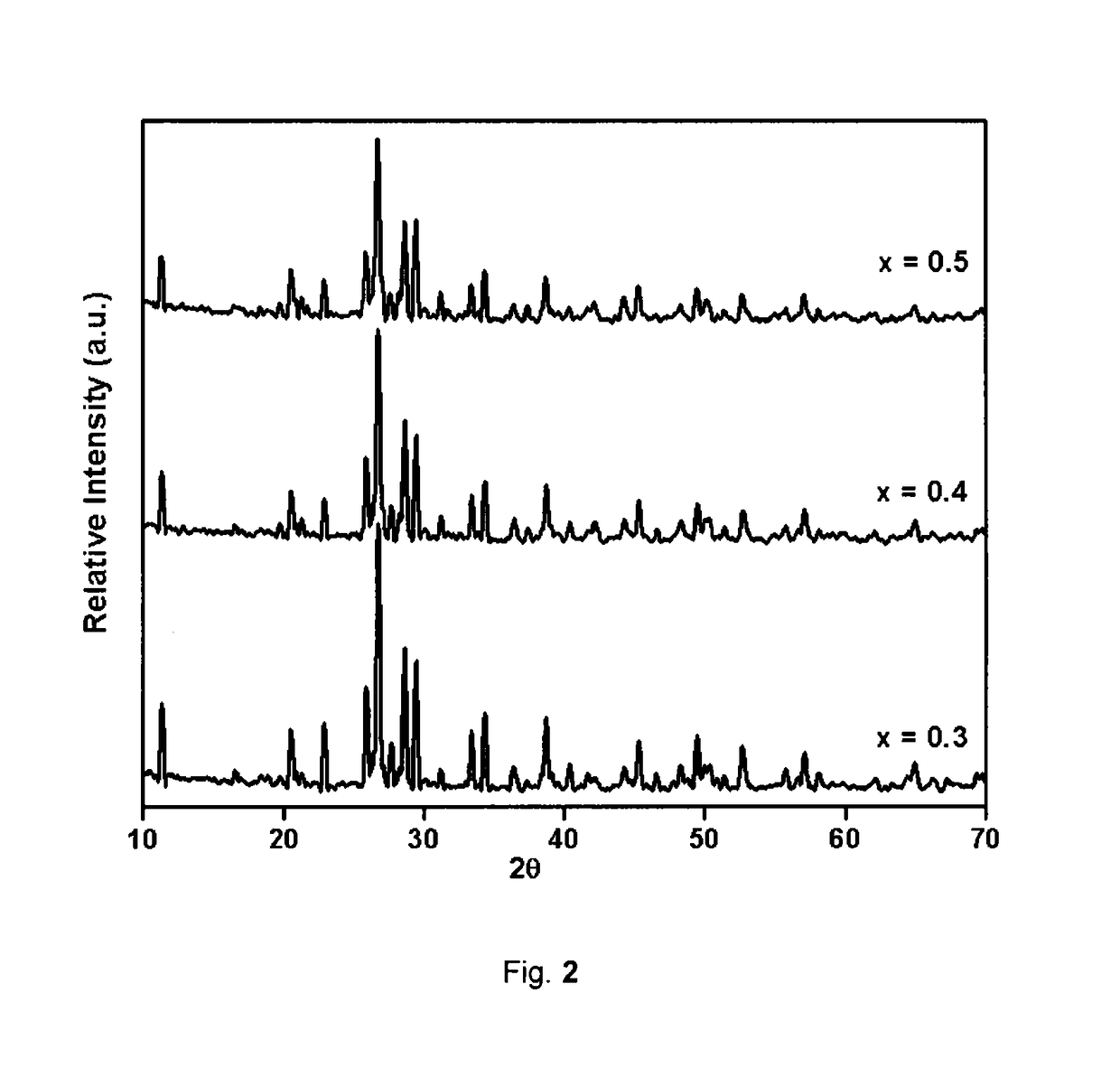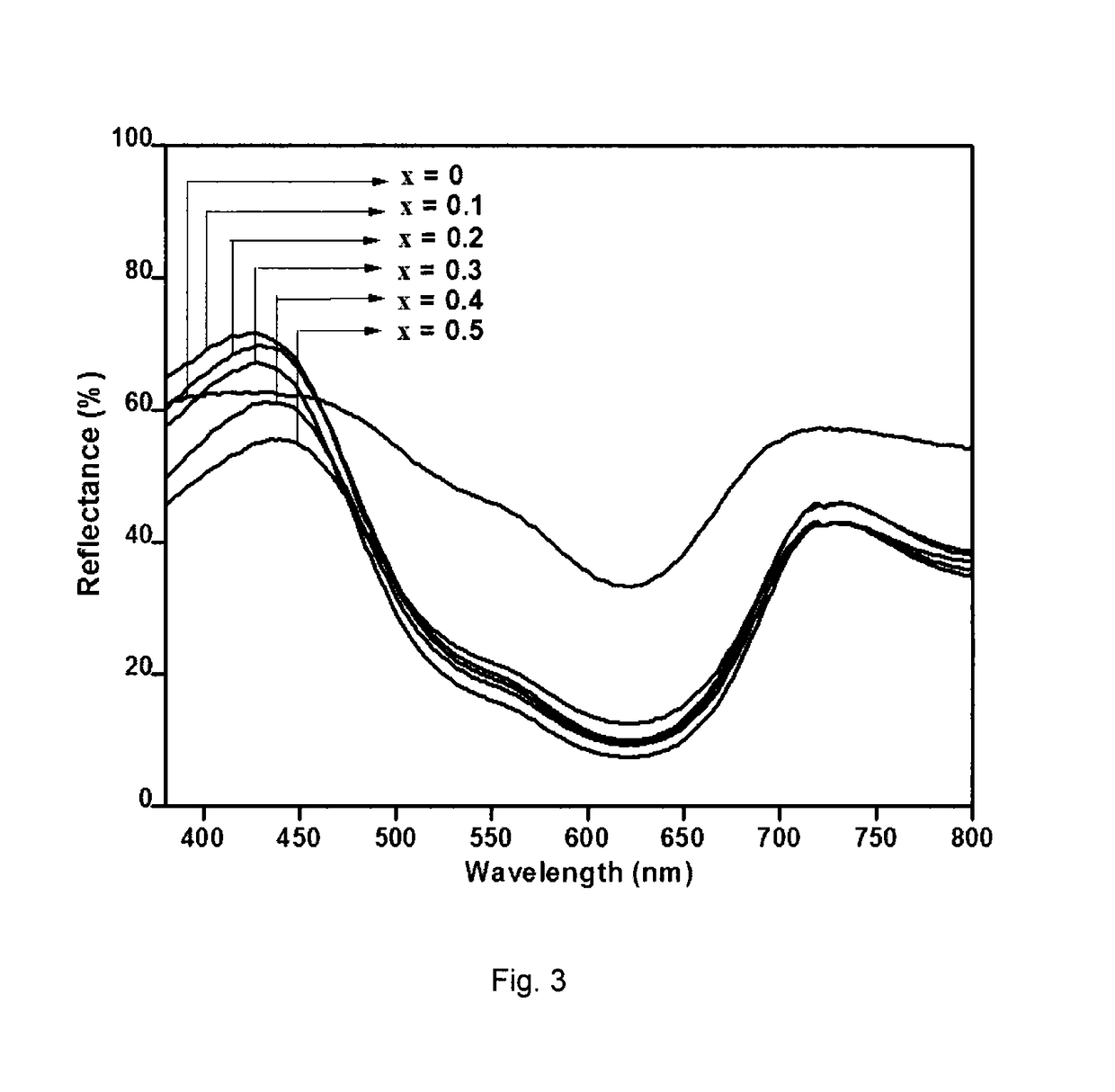Blue inorganic colourants/pigments and process for preparation thereof
a technology of inorganic pigments and pigments, which is applied in the field of blue inorganic pigments, can solve the problems of high toxicity of cobalt, large amount of so/sub>emission in the manufacture of ultramarine, and inability to meet the requirements of high temperature and acidity, and achieves remarkable blue colour, high near infra-red reflectance, and impressive chromatic characteristics.
- Summary
- Abstract
- Description
- Claims
- Application Information
AI Technical Summary
Benefits of technology
Problems solved by technology
Method used
Image
Examples
example 1
[0059]This example illustrates the preparation of SrCuSi4O10.
[0060]1.48 g of strontium carbonate [SrCO3; M=147.63], 0.80 g of copper oxide [CuO; M=79.54], and 2.41 g of silicon dioxide [SiO2; M=60.14] were thoroughly mixed in the stoichiometric ratio in an agate mortar with a pestle. The mixture was calcined at 950° C. for 16 h in air atmosphere. The calcined mass was then grinded with mortar and pestle to reduce the particle size of the pigment.
[0061]The blue-coloured powder obtained has the following characteristics:
[0062]The XRD pattern can be indexed to tetragonal phase as depicted in FIG. 1.
[0063]Particle size analysis of the pigment SrCuSi4O10, reveals a mean diameter=2.27 micrometers (size of 90% particles <4.17 micrometers, 50% particles <2.00 micrometers and 10% particles <0.79 micrometers).
[0064]The diffuse reflectance of the powder was measured with UV-vis spectrophotometer and is shown in FIG. 3. The chromaticity coordinates, determined by the CIE-Lab 1976 colour scales ...
example 2
[0066]This example illustrates the preparation of La0.1Sr0.9Cu0.9Li0.1Si4O10.
[0067]0.16 g of lanthanum oxide [La2O3; M=325.81], 1.33 g of strontium carbonate [SrCO3; M=147.63], 0.72 g of copper oxide [CuO; M=79.54], 0.04 g of lithium carbonate [Li2CO3; M=73.89] and 2.41 g of silicon dioxide [SiO2; M=60.14] were thoroughly mixed in the stoichiometric ratio in an agate mortar with a pestle. The mixture was calcined at 950° C. for 16 h in air atmosphere. The calcined mass was then grinded with mortar and pestle to reduce the particle size of the pigment.
[0068]The blue-coloured powder obtained has the following characteristics:
[0069]The XRD pattern can be indexed to tetragonal phase as depicted in FIG. 1.
[0070]Particle size analysis of the pigment La0.1Sr0.9Cu0.9Li0.1Si4O10, reveals a mean diameter=4.30 micrometers (size of 90% particles <8.76 micrometers, 50% particles <3.24 micrometers and 10% particles <0.97 micrometers).
[0071]The optical reflectance of the powder was measured and is...
example 3
[0074]This example illustrates the preparation of La0.2Sr0.8Cu0.8Li0.2Si4O10.
[0075]0.33 g of lanthanum oxide [La2O3; M=325.81], 1.18 g of strontium carbonate [SrCO3; M=147.63], 0.64 g of copper oxide [CuO; M=79.54], 0.07 g of lithium carbonate [Li2CO3; M=73.89] and 2.41 g silicon dioxide [SiO2; M=60.14] were thoroughly mixed in the stoichiometric ratio in an agate mortar with a pestle. The mixture was calcined at 950° C. for 16 h in air atmosphere. The calcined mass was then grinded with mortar and pestle to reduce the particle size of the pigment.
[0076]The blue-coloured powder obtained has the following characteristics:
[0077]The XRD pattern can be indexed to Tetragonal phase as depicted in FIG. 1.
[0078]Particle size analysis of the pigment La0.2Sr0.8Cu0.8Li0.2Si4O10, reveals a mean diameter=3.57 micrometers (size of 90% particles <7.63 micrometers, 50% particles <2.74 micrometers and 10% particles <0.43 micrometers).
[0079]The optical reflectance of the powder in the region 380-700 ...
PUM
| Property | Measurement | Unit |
|---|---|---|
| particle size | aaaaa | aaaaa |
| wavelength | aaaaa | aaaaa |
| visible reflectance | aaaaa | aaaaa |
Abstract
Description
Claims
Application Information
 Login to View More
Login to View More - R&D
- Intellectual Property
- Life Sciences
- Materials
- Tech Scout
- Unparalleled Data Quality
- Higher Quality Content
- 60% Fewer Hallucinations
Browse by: Latest US Patents, China's latest patents, Technical Efficacy Thesaurus, Application Domain, Technology Topic, Popular Technical Reports.
© 2025 PatSnap. All rights reserved.Legal|Privacy policy|Modern Slavery Act Transparency Statement|Sitemap|About US| Contact US: help@patsnap.com



